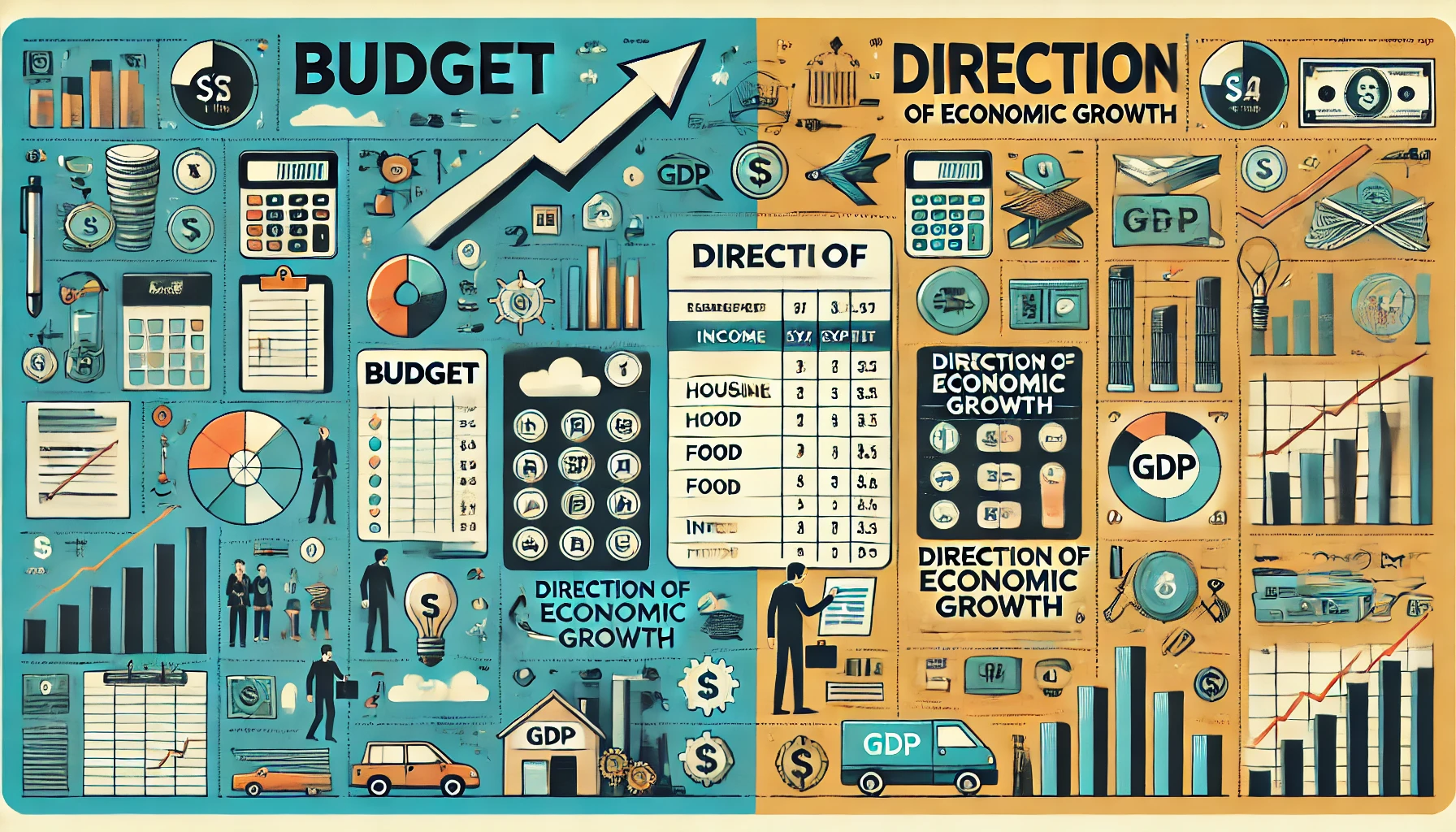Table of Contents
Understanding the Role of the Budget in Economic Growth
A government’s budget is a critical tool that guides and influences the direction of economic growth. It outlines the government’s financial plan for the upcoming fiscal year, detailing expected revenues and planned expenditures. Through the budget, the government can implement policies that stimulate economic activity, address structural challenges, and ensure sustainable growth.
How the Budget Influences Economic Growth:
- Resource Allocation:
- Targeted Spending: The budget determines how resources are allocated across different sectors of the economy. By prioritizing sectors such as infrastructure, education, healthcare, and technology, the government can stimulate growth in these areas, leading to overall economic development.
- Capital vs. Revenue Expenditure: The balance between capital expenditure (long-term investments) and revenue expenditure (operational costs) in the budget reflects the government’s focus on growth. Higher capital expenditure often indicates a focus on long-term growth through infrastructure development and capacity building.
- Fiscal Policy:
- Taxation: The budget outlines tax policies, which directly impact economic growth. Lower taxes can stimulate investment and consumption, while higher taxes might be used to control inflation or reduce fiscal deficits. The structure and fairness of the tax system also influence income distribution and economic inclusivity.
- Government Borrowing: If the budget runs a deficit (where expenditures exceed revenues), the government may borrow to finance the gap. Borrowing can stimulate short-term economic growth but must be managed carefully to avoid long-term debt sustainability issues.
- Public Investment:
- Infrastructure Development: Investment in infrastructure such as roads, ports, and energy supply boosts economic growth by improving productivity, reducing costs, and facilitating trade. The budget directs funds to these projects, which are crucial for long-term economic expansion.
- Human Capital Development: The budget allocates resources for education, healthcare, and social services, which are essential for improving the quality of the workforce. A healthy, educated workforce is more productive and innovative, driving economic growth.
- Social and Economic Equity:
- Redistributive Policies: Through welfare programs, subsidies, and social services funded by the budget, the government can address income inequality and support vulnerable populations. Ensuring that economic growth is inclusive helps to sustain long-term growth by expanding the consumer base and reducing social tensions.
- Employment Generation: The budget can fund programs aimed at job creation, especially in sectors like infrastructure, agriculture, and small businesses. Employment generation leads to higher disposable income and increased demand for goods and services, further driving economic growth.
- Monetary and Fiscal Coordination:
- Interest Rates and Inflation Control: The budget works in tandem with monetary policy to manage interest rates and control inflation. By adjusting fiscal policy (through spending and taxation), the government can influence aggregate demand, thereby impacting growth. For instance, expansionary fiscal policies (increased spending or tax cuts) can boost economic activity, while contractionary policies can cool down an overheating economy.
- Stimulating Innovation and Entrepreneurship:
- Incentives and Subsidies: The budget can provide incentives, tax breaks, and subsidies to encourage innovation, research and development (R&D), and entrepreneurship. This helps in fostering a dynamic business environment, leading to technological advancements and new industries that contribute to economic growth.
- Supporting Small and Medium Enterprises (SMEs): Allocating budgetary support to SMEs can stimulate growth by enabling these businesses to expand, innovate, and create jobs.
- Sustainability and Green Growth:
- Environmental Protection: The budget can allocate funds to environmental conservation and renewable energy projects, promoting sustainable economic growth. Investments in green technologies and sustainable practices help protect natural resources, reduce pollution, and ensure long-term economic resilience.
- Climate Change Adaptation: By budgeting for climate change mitigation and adaptation strategies, the government can protect the economy from the long-term risks associated with environmental degradation and climate-related disasters.
Direction of Economic Growth Through the Budget:
- Sectoral Focus:
- Industry-Specific Growth: The budget can direct resources towards specific industries that are deemed crucial for future growth, such as technology, renewable energy, or manufacturing. This sectoral focus can help develop new growth engines within the economy.
- Regional Development: The budget can also target underdeveloped regions through special economic zones, infrastructure projects, and incentives for businesses to set up operations in these areas, promoting balanced regional growth.
- Long-Term Strategic Planning:
- Infrastructure and Human Capital Investments: The budget sets the stage for long-term growth by investing in infrastructure and human capital, laying the foundation for future economic expansion.
- Innovation and Technology: Prioritizing innovation and technological development in the budget can steer the economy towards high-tech industries, increasing productivity and global competitiveness.
- Crisis Management and Recovery:
- Economic Stimulus Packages: In times of economic downturns or crises (e.g., financial crises, pandemics), the budget can include stimulus packages to revive the economy. This might involve increased public spending, tax relief, and direct support to businesses and individuals.
- Resilience Building: The budget can allocate funds to build economic resilience, ensuring that the economy can withstand and recover from shocks. This includes creating fiscal buffers, investing in health systems, and improving disaster preparedness.
Conclusion:
The budget is a powerful tool that not only reflects a government’s fiscal policy but also shapes the direction of economic growth. Through strategic resource allocation, fiscal discipline, and targeted investments, the budget can stimulate economic activity, promote inclusivity, and ensure sustainable development. By carefully crafting the budget, governments can guide the economy towards achieving long-term growth objectives, improving living standards, and fostering a stable and prosperous society.

